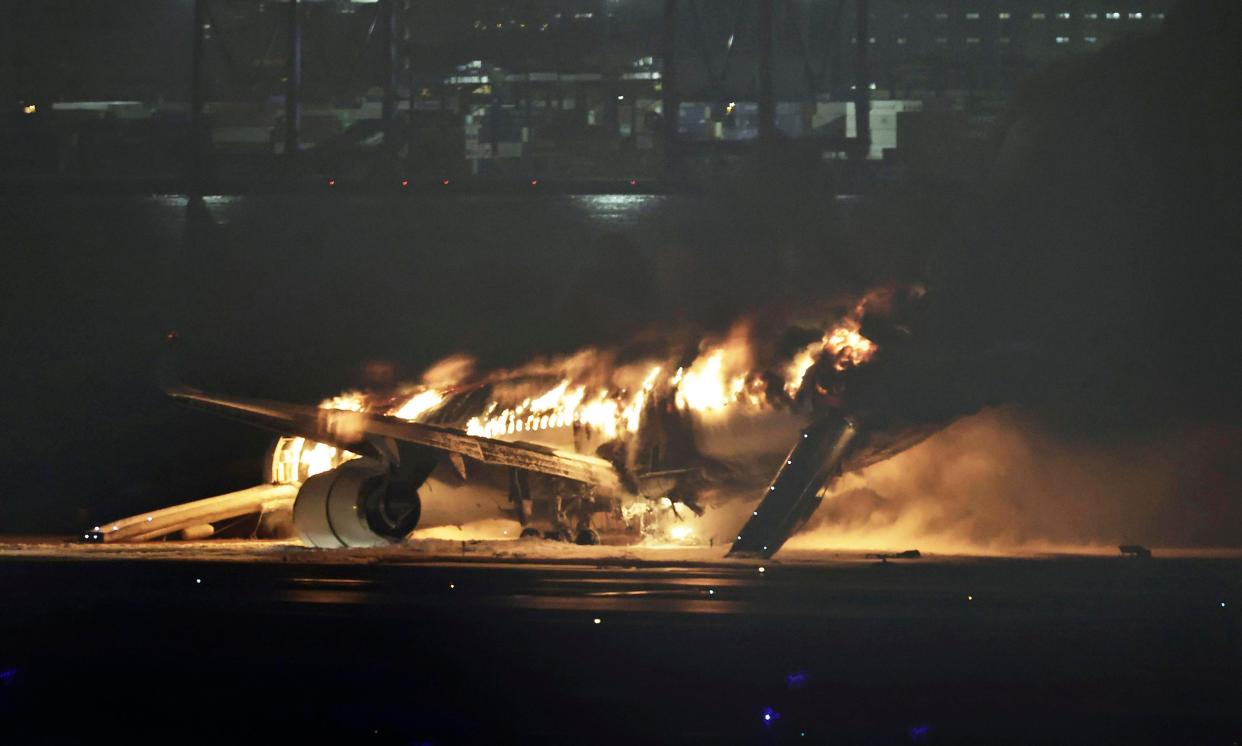Do fatal plane crashes happen in the US? What to know about runway incursions.

A passenger plane burst into flames after a collision with a coast guard aircraft at Haneda Airport in Tokyo on Tuesday.
While all 379 passengers and crew were able to make it out of the Japan Airlines plane, five crew members on the coast guard plane were killed, NBC News reported, citing Transport Minister Tetsuo Saito.
The last major fatal crash in the U.S. was in 2009 when a commuter plane en route from Newark, New Jersey, to Buffalo, New York, crashed just before landing. Pilot fatigue was considered a key factor in the wreck, which killed all 49 passengers and crew, plus one person on the ground.
Collisions between airplanes on the ground are even rarer in the U.S., although there have been some high-profile close calls in recent years.
What is a runway incursion?
An incursion is defined as the incorrect presence of an aircraft, vehicle, or person on the protected area of a surface designated for the landing and takeoff of aircraft, according to the Federal Aviation Administration.
In the case of Japan's accident, a passenger plane burst into flames as it landed and collided with the coast guard aircraft.
How often do runway incursions happen in the US?
You might have heard news of "near-miss accidents" or "close calls" in the U.S. – which are incursions where a collision was avoided.
Early last year, a series of high-profile near-collisions at airports left many experts and travelers alike wondering what's going on with the nation's air transportation system. A recent New York Times investigation found that according to FAA data, near-miss accidents increased nearly 25% in the last decade, with about 300 such accidents in the most recent 12-month period for which reports are available.
"We're trying to take a bigger look and do some deeper analysis to see what's going on," Transportation Secretary Pete Buttigieg told USA TODAY back in March. "It's enough that I'm concerned."
Some of the potentially catastrophic incidents last year included a FedEx plane that was cleared to land on the same runway where a Southwest 737 was preparing to take off at Austin Bergstrom International Airport in Texas. That, just weeks after an American Airlines jet inadvertently taxied across a runway while a Delta plane was beginning its takeoff roll at JFK Airport in New York. Also, a private jet took off without clearance at Boston Logan International Airport and crossed the path of a JetBlue flight that was preparing to land.
What causes airplanes to catch fire when they crash?
A variety of factors can lead to a fire in an airplane crash, but not all plane crashes end in an explosion. Typically, fires are caused by a combination of fuel and friction. When an airplane hits the ground or another object at high speed, it can often lead to sparks. But the impact is rarely the only cause of a fire. Airplanes carry thousands of pounds of jet fuel for most flights, and other fluids like hydraulics and lubricating oil can be flammable. Fires are usually the result of the impact causing one of those substances to ignite.
Is flying still the safest mode of transportation?
Yes, flying is considered extremely safe. The last major fatal crash in the U.S. was in 2009. While no mode of transportation is completely without risk, there are many systems in place to keep airplanes moving safely. The federal government is currently reviewing procedures after a series of high-profile close calls to help bolster the aviation safety net and make it even more robust.
This article originally appeared on USA TODAY: Are runway incursions common in the US? What to know.

